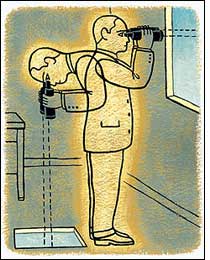Feb 01, 2006The accuracy rate for our 2005 predictions wasn't especially good. We were correct when we said that EPCglobal would submit its Gen 2 specification to the International Organization for Standardization (ISO) for approval. But we were overly optimistic on several other predictions. We said that shortages of tags would cease to be an issue after midyear. While supply did increase during the year, some label suppliers had trouble meeting demand, particularly for item-level tags for pharmaceutical products.
We said more European retailers would announce plans to use EPC technology, the technology would be adopted to track replacement auto parts and a large U.S. retailer would announce plans to use EPC to track major household appliances. None of those predictions were on the mark, although it is true that more European retailers have initiated trials of EPC technology, and the technology is being tested for tracking both replacement auto parts and white goods. End users in general were less willing to commit publicly to using EPC in their supply chains than we anticipated.
We also said Gen 2 tags would reach the market in the fourth quarter and the shortage of skilled installers would become an issue late in 2005. Sample tags did reach the market in late 2005, but most vendors won't be delivering tags in significant volumes until this quarter, and most implementations are moving too slowly for the lack of installers to be a real issue.
Given our less-than-stellar record in 2005, it might seem a tad presumptuous to offer predictions for the year ahead. Still, these forecasts are not meant to show our clairvoyance, but rather to provide you with guideposts to emerging trends and a means to measure the progress of the industry.
With that in mind, here's what we foresee happening in 2006:
- The International Organization for Standardization will approve the EPC Gen 2 spec as an international standard.
- End users purchasing EPC Gen 2 tags and interrogators from a variety of vendors will experience some problems with interoperability, but these will be resolved fairly quickly.
- The supply and quality of EPC Gen 2 tags will be spotty throughout the first half of the year, but will improve by the end of the year.
- Wal-Mart will begin requiring suppliers to use EPC Gen 2 tags before the end of the year.
- Retailers and their suppliers will begin to share EPC data live over the EPCglobal Network.
- Hardware vendors will begin introducing new interrogator designs for specific applications, such as for use on forklift trucks and mobile carts.
- EPCglobal will begin to work on a protocol for reading semi-passive tags and tags that support low-cost sensors.
- RFID will move beyond the supply chain and be embedded in more products.
Software will begin focusing on vertical industry solutions that leverage RFID data.

